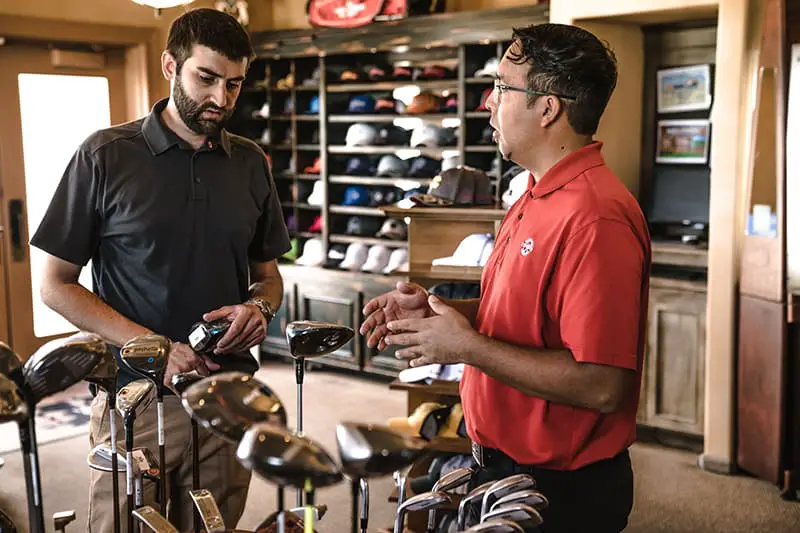Click here to get this post in PDF

There’s no denying that the shopping experience has truly transformed over time. However, it’s also important to appreciate that the in-store shopping experience is irreplaceable to any online alternatives. Read on as we explore how shoppers are looking for an experience when they visit a store — often by using new technology.
A change in shopping habits
More of us know what we want when we walk into a shop. In fact, 98% of Gen-Z shoppers walk into shops and find what they’re looking for by themselves. We no longer start the buying process by window shopping. Instead, we’ve probably seen something on social media, scanned the reviews and made a purchase decision before we head out the door. Of course, this doesn’t mean that retailers should be giving up or becoming less competitive, they can still grab the attention of their audience through in-store engagement and customer relationship building — two things that an e-commerce site would find difficult to achieve.
Not only this, but personalisation is becoming more important to buyers. Customers want something that’s tailored to their own needs, not the masses, and what better way to find out what these are than with a face-to-face conversation? Yes, customers can fill in an online form with their customisation requirements, but they don’t get to see the product until it has arrived. With an in-store experience, customers can tell the retailer their requirements and feel more confident that they’ll be carried out — this type of engagement is non-comparable to a form or live chat feature.
‘Retailtainment’ is another trend that taking over the industry, and customers are expecting it too. It’s all about offering in-store entertainment — not necessarily to lead to direct sales but to encourage visitors to the store. This could be real-life mannequins, a performance, or an interactive competition that grabs attention. It’s all about thinking outside the box and offering experiences that aren’t available online. An example of this would be at the Apple Store, which often hosts different activities for customers: from learning how to make music on GarageBand to creating your own emojis!
In-store technology
Whether it’s mobile banking, contactless payments or intelligent personal assistants (such as Alexa) or queue management, we’ve become accustomed to having the help of technology throughout our day-to-day life. So, why should it be any different when we step inside a store? In fact, it’s somewhat expected. Some companies are being innovative when it comes to their in-store technology — after all, more time in-store can lead to better customer relationships and hopefully, sales.
Tiffany and Co. opened a store in London’s Covent Garden to engage with customers who may have previously found their brand too expensive or inaccessible. In this store, visitors are able to personalise jewellery and there is even a Tiffany perfume vending machine. These concepts have driven customers to the store and encouraged social media conversation in a way that an online experience may have struggled.
Other companies such as Made.com and IKEA encourage customers to spend more time in store with cafes and restaurants. Made.com also attaches QR codes to their products around their store to encourage users to find and make a purchase online if this is the payment channel they prefer.
Fashion retailer, QUIZ Clothing encourages the use of an in-store kiosk. This enables visitors to browse the full collection of products even if they aren’t available in store and get them delivered to their home address. It also presents a wider range of products to the customer including different colours and sizes that may not be in stock in store. When we consider that 66% of Gen-Z surveyed said product availability is important, in-store technologies such as the above are a necessity for retailers.
A holistic experience
It’s clear to see that what customers are after more than anything is a holistic experience. Something that brings together the physical aspects of store visits with digital aspects from online shopping. For example, 51% of respondents who use retail mobile apps use them while shopping in-store, and this is mainly to redeem in-store discounts, compare prices, view product ratings and find products. By being able to offer this all-round experience, businesses can be part of the entire customer buying journey.
Understandably, brands should be focusing on their digital presence but not at the expense of their in-store offering. What a customer can gain from visiting a store in person can build relationships and shape opinions in a way that an online-only brand couldn’t. With the “death of the high street” playing over many retailers minds, it’s important to bear all of this in mind when planning ahead.
You may also like: How is ‘Social Shopping’ Reshaping Online Retail?

[…] You may aslo like: Why the in-store shopping experience is irreplaceable […]